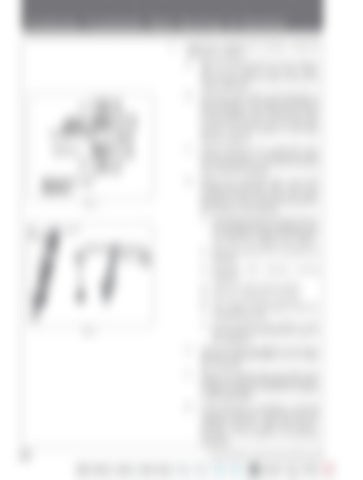Crankcase, Crankshaft, Main Bearings & Flywheel 2.
PILOT BEARING
Inspect the crankcase for trueness, using the crankshaft as follows : a)
Wipe the bearing supports of the crankcase free of oil with a lint free cloth. The crankcase should be bottom side up and levelly supported.
b)
Install the upper halves of the bearings to the crankcase. If the original bearings are being reinstalled, ensure that they are fitted to the positions from which they were removed. The location nibs of the bearings must fit into the notches in the main bearings supports.
c)
Smear blueing on the crankshaft main journals and lower it carefully and evenly on to the bearings. Do not install the bearing caps and lower bearings.
d)
Rotate the crankshaft back and forth through approximately 180 0, remove the crankshaft evenly and inspect the upper bearing for an even transfer of blueing from the journals to the bearings.
Fig. 5
Fig. 6
C-60
1)
Any bearings that do not show all over even blueing should be replaced by new. It is advisable to replace all bearings by new ones if an original one is faulty.
2)
Clean the blueing off the crankshaft and bearings.
3)
Checking main clearance.
4)
Install the upper bearing halves.
5)
Place the crankshaft in position.
6)
Lay a length of plastigauge along the crankshaft journals.
7)
Fit the bearing lower halves to the bearing caps and assemble the caps to the crankcase.
bearing
running
e)
Fit the capscrews and tighten to the torque detailed in SPECIFICATIONS. Do not rotate the crankshaft.
f)
Remove the bearing caps and measure the thickness to which the plastigauge has been crushed. This thickness should be as detailed in SPECIFICATIONS.
g)
If the clearance is excessive, it may be necessary to grind the crankshaft and install undersize bearings. These bearings are available in sets of +0.030” and +0.015”. See para. 3c for details of re-grinding crankshaft. 35 Series 4WD, Model - 3535, 4035, 4535 and 5035 SM June’08




















































